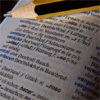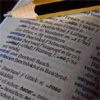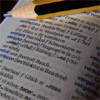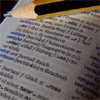Dinklage - from the chronicles
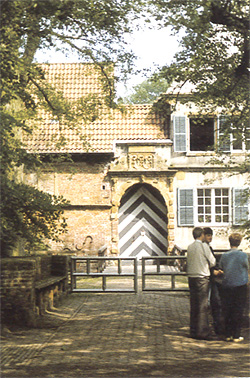
Dinklage is situated directly in the so-called 'Dinklager Basin', a large lowland area, which stretches between the Dammer Hills, the Bersenbrücker Heights and the Cloppenburger Geest. the landscape picture is diverse and is dispersed by numerous line of trees and hedgerows.
The origin and development of the village goes probably back to the castle Dinklage, one of the oldest most important and prettiest moated castles of the Münsterland. The name Dinklage is mentioned for the first time in the year 1231 (Thinclage: from 1270 Dinklage). The village name – especially its ending ('lage') – implies a cleared settlement of the 11th to 12th-century, probably with court place (Thinc, Thing, Ding).
The owner of the estate and land were the 'masters von Dinklage'. These former commissionaires of the earls from Ravensberg-Vechta (until 1252) became with the transfer of the earldom to Münster Episcopal feudatories. They became one of the leading noble families in the area in the middle of the 14th-century. In 1372 they tried to built up an independent dominance but were wrestled down with huge efforts by the bishop. The castle destroyed during the siege was replaced by four new castles at different places around 1400. The so-called 'Dietrichsburg' is the only one, which still exists. The former Rentei (authority building) and castle chapel are the only remider of the 'Johannsburg', the 'Herbordsburg' and the 'Hugoburg'. In the 17th-century prince-bishop Christoph Bernhard von Galen purchased the Dinklager manors for the impoverished masters von Dinklage for his brother Heinrich von Galen, the Drostes von Vechta. The family von Galen relocated its family seat to the Dietrichsburg. Clemens August Earl von Galen, who became later cardinal and the 'Lion of Münster' was born here in the year 1878. In 1677 Dinklage became in connection with the chamberlain's office of the earldom Münster an independent 'Herrlichkeit' (territory) with judiciary and independent administration. This 'small state' continued under the Earl von Galen until the year 1827. On the 1. January 1827 Dinklage merged as last village of the 'Oldenburger Münsterland' with the dukedom Oldenburg. The 'Oldenburg time' started.
Today Dinklage is an aspiring city with a closed city centre. In the last 10 years the population increase amounted to around 2.500 persons. In the year 2004 around 10.900 people lived in the city area; in the seven farming communities Bahlen, Bünne, Höne, Langwege I, Langwege II, Schwege and Wulfenau live around 2.000 persons. So a population of altogether 12.900 live on an area of 72,65 sq. km.
The town's economical structure is formed by industry (iron foundry, furniture, tool, machine factories, pipe manufacture), by trade (several agricultural businesses, whole sale, retail), by business (building construction, industrial bakery) and agriculture.
In the agricultural area is the focus on intensive animal husbandry. Top priority for the future is the preservation of existing jobs and the creation of new ones in the city.
For trade and industry businesses new industrial sites were dedicated in the city's north some years ago. Further sites are to be designated there in the near future.
The trade and industrial settlement is benefitting by the city's absolute favourable traffic location. Dinklage is situated in close proximity to the federal motorway – 'Hansalinie' (A1) in the city triangle Osnabrück – Oldenburg – Bremen. With the construction of a bypass the connection of the industrial sites to motorway is improved even more.
Dinklage has all needed utility services for its population. the city has good infrastructure as well as a good developed school system.
A centre of 'cultural life' is - not only for the city but also for the surrounding area – the youth music school Romberg with over 1.000 pupils. the children's choir and other groups of the music school are well known beyond city borders. The choir had presentations among others in Rome and at the chancellor's children's festival in Bonn. But many other associations are also important cultural bearers.
Of supra-regional importance is the Cardinal-von-Galen-House – a special school for the physical handicapped with boarding school, at the same time special pedagogic education centre. Right now ca. 230 children go to this facility.
Dinklage is twinned with the French community 'Epouville' in Normandy. The partnership contract was signed in 1986.
For recreation and sportive work-outs the expansive Burgwald (castle forest ca. 50 ha) is ideal and there are also many sportive facilities, which have been hugely increased in the last years.
Cyclists will find great cycle paths in Dinklage and surrounding area. For recreation seekers lovely hotels - in parts with executive facilities like wellness area and guesthouses with over 200 beds are available.
In the last years Dinklage received a completely new 'cityscape'. this upwards trend was honoured by the awarding of the description 'city' in the 16. September 1995.
The objective of all responsible persons is that citizens and guests love to be here in Dinklage, the 'young city at the Burgwald' also in the future.
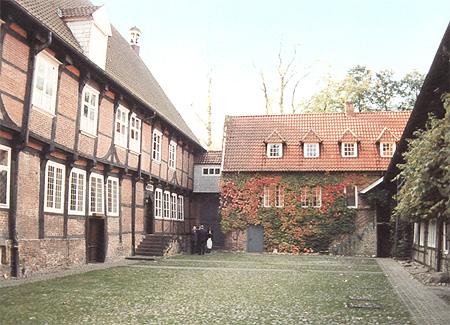
Further information:
Stadt Dinklage
Am Markt 1, 49413 Dinklage
Telephone: 0 44 43 / 8 99 0
Facsimile : 0 44 43 / 8 99 25
Internet: www.dinklage.de
e-Mail: dinklage@dinklage.de

 Deutsch
Deutsch Nederlands
Nederlands Dansk
Dansk Österreichisch
Österreichisch Po Polsku
Po Polsku



